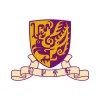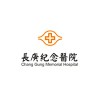
One Pass Tirofiban In Management of Ischemic Stroke Thrombectomy In China
Ischemic StrokeIn recent years, the positive results of trials for mechanical thrombectomy (MT) have brought a new era for large artery occlusion patients, especially those beyond the time window of intravenous thrombolysis. However, interventional procedures can cause endothelial injuries leading to local activation of platelet aggregation and subsequent thromboembolic complications or early re-occlusion.Tirofiban is a specific antagonist of the platelet glycoprotein (GP) IIb/IIIa receptor, which is considered highly effective against the final common pathway of platelet aggregation and preventing vascular reocclusion. However, there is no consensus on if AIS patients treated with MT also benefit from intravenous tirofiban. This study aims to evaluate the effectiveness and safety of profiles of tirofiban during MT and provide reliable clinical evidence for the treatment of tirofiban in AIS patients.

Low-Volume Interval Training and Resistance Exercise in Individual With Stroke
StrokeTo examine the feasibility of Low-Volume Interval Training (LV-ITT) and Resistance Exercise (RE) on walking performance (walking endurance, gait speed, functional balance), lower limb muscle strength and quality of life among individuals with post-stroke.

Technology-assisted Rehabilitation After Acute Stroke
StrokeThe aim of the study is to evaluate the effects and costs of an intensified rehabilitation for stroke patients. Using novel technologies the patients will receive an augmented exercise therapy during the first weeks after stroke. The effects on restoration of functions as well as on the costs incurred from social and health care services will be assessed and compared to the conventional rehabilitation over 6 month follow-up.

Transcranial Alternating Current Stimulation for Hand Function Recovery
StroketACS has the potential to directly induce cortical alterations in the intrinsic neural oscillation at specific frequencies, and the brain could mirror the induced frequencies of the external source of oscillations from the stimulation. Hence, tACS with matching stimulation frequency could be an effective means of enhancing brain oscillatory activity to potentially induce synaptic plasticity for restoration of damaged brain functions. However from the existing studies of applying tACS over the M1 in healthy and diseased brains, there is a wide range of applied stimulation frequencies and varied neuromodulation effects on motor behavior or cortical excitability at different frequencies. In this proposal, subject-specific stimulation frequency and latency will be identified.

Thrombolysis of Urokinase for Minor Stroke
Minor StrokeThis trial will enroll patients that have been diagnosed with minor stroke, which has occurred within the past 6 hours. TRUST is a prospective multicenter, randomized, blinded-endpoint study to evaluate the efficacy and safety of Urokinase Thrombolysis for patients with minor stroke.

Impairment-Specific and Augmented Intervention on Turning
StrokeThe objective of this study is to investigate the effects of the impairment-specific and augmented intervention based balance and strength training on turning performance in individuals with chronic stroke.

Neural Mechanisms and Efficacy of Dual Neurotechnology-aided Mirror Therapy in Chronic Stroke: Neural...
Cerebrovascular AccidentMirror therapy (MT) has been demonstrated, in terms of neuroplasticity, to improve sensorimotor function of paretic upper extremity (UE) in chronic stroke patients. Central and peripheral electrical stimulation techniques such as ranscranial direct current stimulation (tDCS) and functional electrical stimulation (FES) can individually enhance effects of MT, combining both of them with MT can be a potentially valuable approach to maximize neural and functional recovery post stroke. To our knowledge, no studies combined central and peripheral neural network reorganization technique with motor behavioral learning approach to investigate its possible benefit after stroke. This project will be the first to design a "dual neurotechnology-aided MT (DNA-MT)", which combines tDCS and FES with contemporary neurorehabilitation approaches (i.e., MT) to stimulate both central and peripheral nervous systems to maximize neural and functional recovery post stroke. Investigators will determine the efficacy and neurophysiological and motor mechanisms related to this novel DNA-MT approach and identify potential responders to this novel intervention.

Combining Non-Invasive Vagus Nerve Stimulation and Robotic Training in Upper Limb-Impaired Chronic...
StrokePrevious studies suggested that both robot-assisted rehabilitation and non-invasive vagus nerve stimulation can improve upper limb function in chronic stroke patients. Aim of present study is to explore whether the combination of these two approaches might enhance their positive effects on motor recovery. Safety and efficacy of this combination will be assessed within a proof-of-principle, double-blinded, randomized, sham-controlled trial. Transcutaneous vagus nerve stimulation (tVNS) will be delivered at left ear, in order to improve the response to the following robot-assisted therapy. Patients with both ischemic and hemorrhagic chronic stroke will be randomized to robot-assisted therapy associated with real or sham tVNS, delivered for 10 working days. Change in Fugl-Meyer has been chosen as primary outcome, while changes in several quantitative indicators of motor performance extracted by the robot as secondary outcomes.

Emotions Analysis in Patients With Chronic Phase of Stroke Basal Ganglia
Stroke Basal GangliaCompare the emotional experience of patients with focal lesions of the basal ganglia by ischemic or hemorrhagic damage and healthy participants. These anomalies will be highlighted by neuropsychological and electrophysiological assessments.

Protective Effects of Normobaric Hyperoxia on Blood Brain Barrier in Patients With Acute Ischemic...
StrokeAcuteThe purpose of this study is to find out a serum marker for the evaluation of blood brain barrier damage based on animal experiments and investigate the effect of NBO(Normobaric hyperoxia)on blood brain barrier in the acute ischemic stroke patients who received r-tPA thrombolytic therapy.
